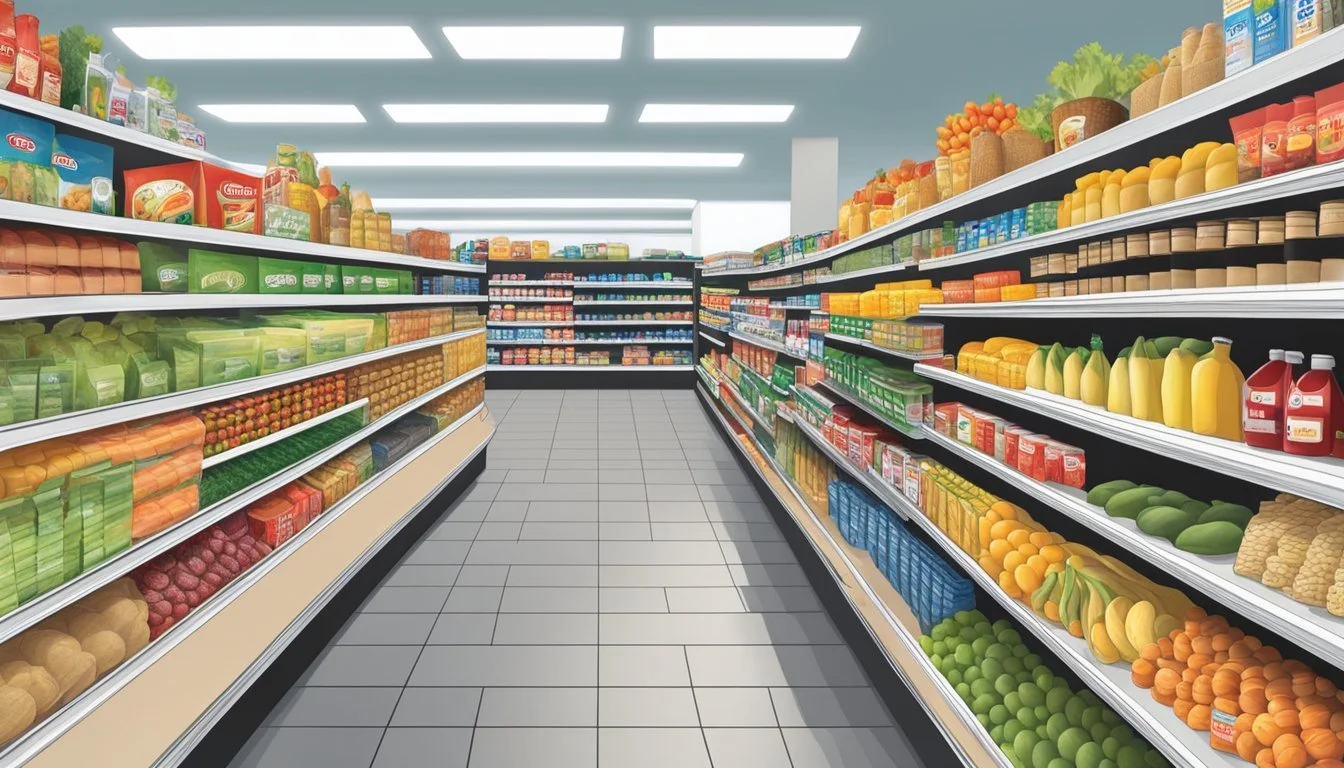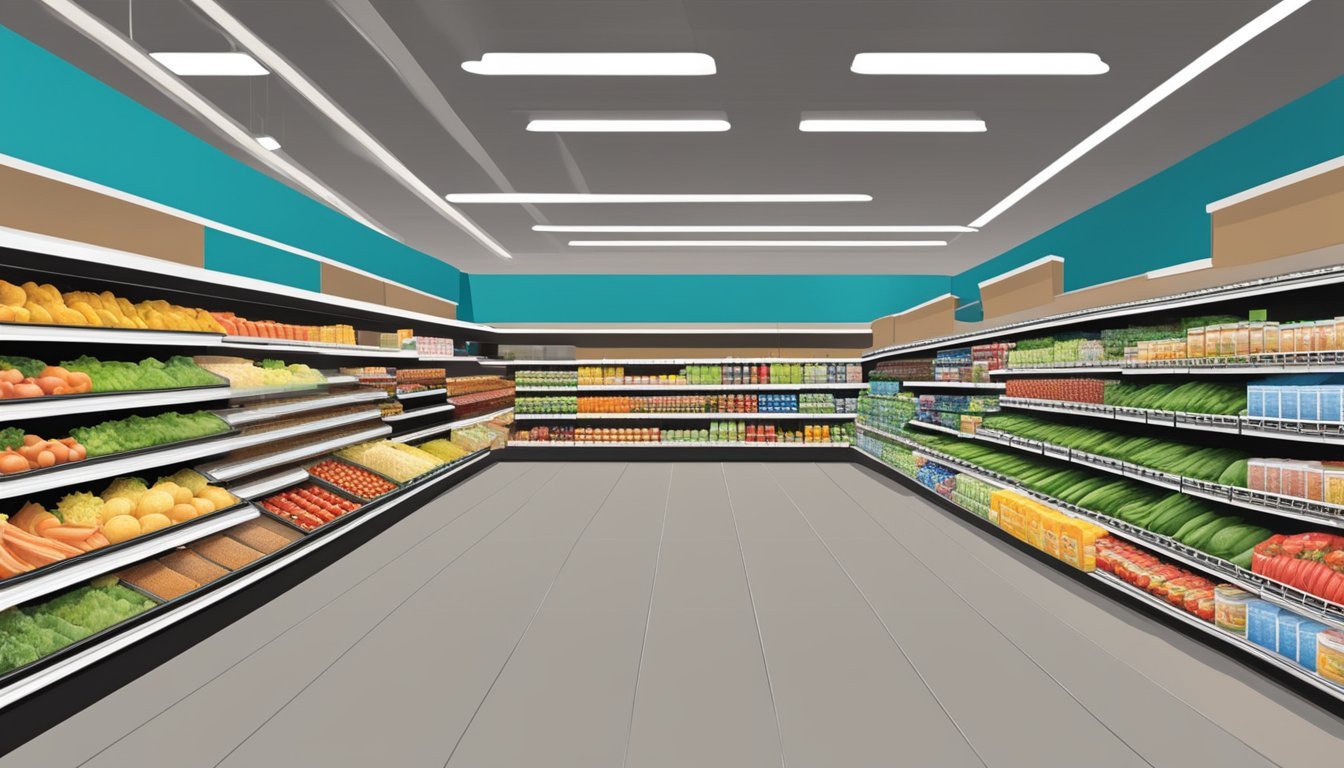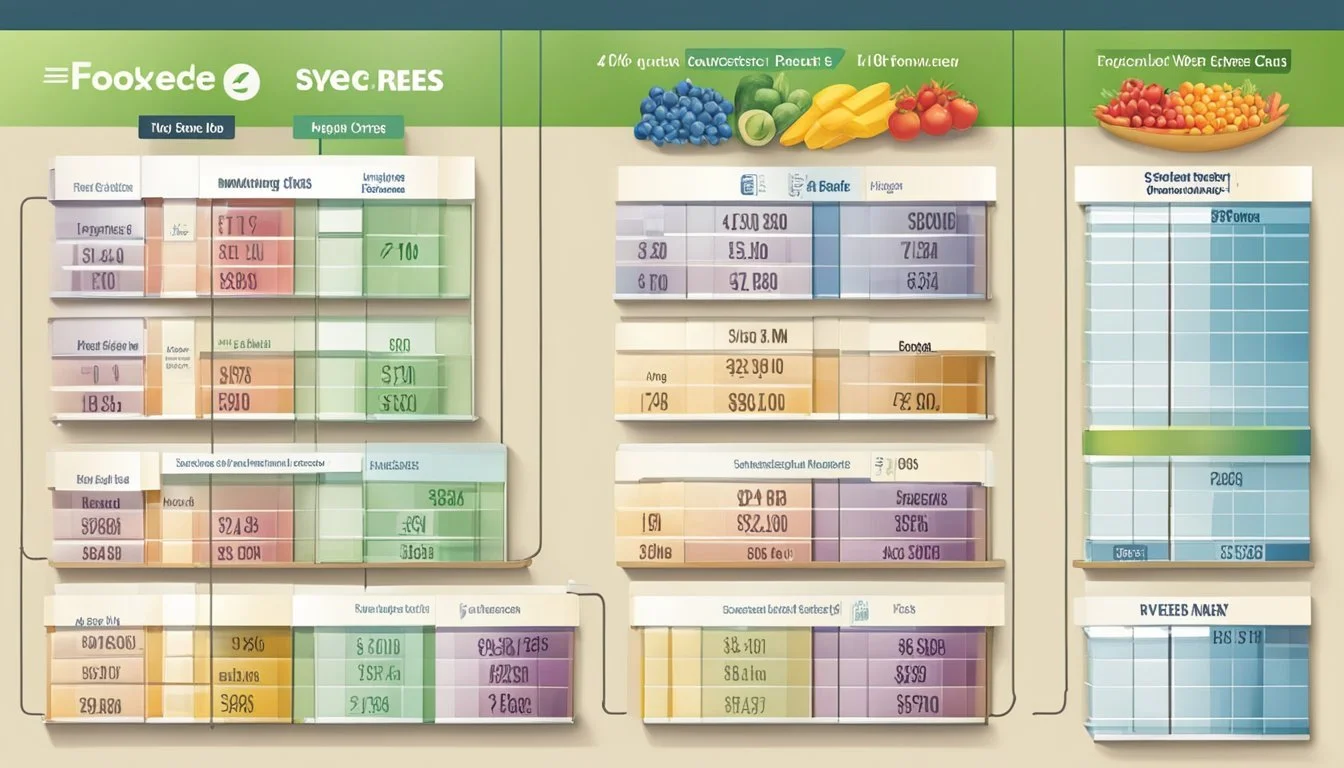Is FoodMaxx Cheaper Than Hy-Vee?
A Comparative Price Analysis
When it comes to grocery shopping, finding the best deals can make a significant difference in your budget. Two popular chains, FoodMaxx and Hy-Vee, offer competitive prices on groceries. FoodMaxx tends to be cheaper than Hy-Vee for many staple items, but the price difference can vary depending on specific products and locations.
Both stores have unique strengths. FoodMaxx is known for its no-frills approach and focus on low prices, while Hy-Vee often receives high marks for quality and customer service. Price-conscious shoppers may find more consistent savings at FoodMaxx, but Hy-Vee's sales and promotions can sometimes offer better value on certain items.
To maximize savings, savvy consumers often compare prices between multiple stores and take advantage of special offers. While FoodMaxx may have lower everyday prices, Hy-Vee's loyalty programs and wider selection of products can appeal to customers looking for a balance between cost and variety.
Understanding Grocery Pricing
Grocery pricing involves complex factors that impact the final cost of products on store shelves. Retailers like FoodMaxx and Hy-Vee employ various strategies to set competitive prices while maintaining profitability.
Factors Affecting Prices
Supply chain costs play a significant role in grocery pricing. Transportation, storage, and distribution expenses influence the final price of items. Seasonal fluctuations in produce availability can cause price variations throughout the year.
Market competition drives pricing strategies. Stores may adjust prices based on local competitors' offerings. Some retailers use loss leaders, selling certain items below cost to attract customers.
Labor costs and overhead expenses contribute to pricing decisions. Stores with higher operational costs may have slightly higher prices to maintain profit margins.
Role of Store Brands in Pricing
Store brands, also known as private labels, often offer lower prices compared to national brands. These products typically have reduced marketing costs, allowing retailers to price them more competitively.
FoodMaxx and Hy-Vee both offer their own store brands. These products provide budget-friendly alternatives for cost-conscious shoppers.
Store brands can range from basic items to premium offerings. This variety allows retailers to cater to different customer segments while maintaining competitive pricing.
Impact of Regional Focus on Prices
Regional focus can significantly influence grocery prices. FoodMaxx operates primarily in the western United States, while Hy-Vee focuses on the Midwest.
Local sourcing opportunities may lead to lower prices on certain items. Stores can reduce transportation costs by partnering with nearby suppliers.
Regional economic factors, such as cost of living and average wages, can affect pricing strategies. Retailers may adjust prices to align with local market conditions.
Competition density in different regions can impact pricing. Areas with more grocery options may see more aggressive pricing strategies to attract customers.
Assessing FoodMaxx and Hy-Vee
FoodMaxx and Hy-Vee are two distinct grocery store chains with different approaches to serving customers. Their business models, regional focus, and pricing strategies set them apart in the competitive grocery market.
Overview of FoodMaxx
FoodMaxx is a discount grocery store chain primarily operating in California. It focuses on providing low-cost options to budget-conscious shoppers.
FoodMaxx stores typically have a no-frills layout and emphasize bulk purchasing. This approach allows them to offer competitive prices on many items.
The chain's regional focus in California helps it tailor its product selection to local preferences. FoodMaxx often carries a variety of ethnic foods popular in the diverse communities it serves.
While customer service may be more limited compared to full-service grocers, FoodMaxx prioritizes keeping costs down for shoppers.
Overview of Hy-Vee
Hy-Vee is a Midwestern supermarket chain known for its full-service approach and community involvement. It operates as an employee-owned company.
Hy-Vee stores are designed as one-stop shops, offering groceries, pharmacies, and often in-store dining options. This comprehensive approach aims to meet diverse customer needs under one roof.
The chain places a strong emphasis on customer service, with well-staffed departments and knowledgeable employees. Hy-Vee is also known for its community engagement through local sponsorships and events.
Hy-Vee's pricing tends to be competitive within its market, though not always the lowest. The chain often offers sales and promotions to attract cost-conscious shoppers.
Comparing Business Models
FoodMaxx and Hy-Vee represent different ends of the grocery store spectrum. FoodMaxx operates on a low-cost, high-volume model, while Hy-Vee focuses on providing a full-service experience.
FoodMaxx:
Limited store amenities
Focus on low prices
Smaller regional presence
Hy-Vee:
Extensive in-store services
Emphasis on customer experience
Larger Midwestern footprint
These differences in approach impact pricing strategies. FoodMaxx generally offers lower everyday prices, while Hy-Vee may have higher base prices but more frequent sales and a broader range of products and services.
The choice between these chains often depends on individual shopper preferences for price, selection, and store experience.
Cost Analysis
FoodMaxx and Hy-Vee offer different pricing strategies and product selections, impacting overall grocery costs. A detailed examination of their pricing structures reveals key differences across various food categories.
Price Breakdown by Category
FoodMaxx generally provides lower prices on staple items. Their meats and produce sections offer competitive rates, often undercutting Hy-Vee by 10-15%. Dairy products at FoodMaxx tend to be 5-10% cheaper than Hy-Vee's offerings.
Dry goods at FoodMaxx are priced aggressively, with savings of up to 20% compared to Hy-Vee. Frozen foods show a smaller price gap, with FoodMaxx typically 3-7% lower.
Hy-Vee, while generally more expensive, maintains higher prices on premium and organic products. Their meat quality is often perceived as superior, justifying a slight price increase.
Bulk Buying and Savings
FoodMaxx excels in bulk purchase options, offering significant discounts on large quantities. Customers can save 15-25% when buying in bulk, especially on non-perishable items.
Hy-Vee provides fewer bulk options but offers a wider variety of package sizes. Their bulk savings are typically in the 10-15% range, focusing more on family-sized packages rather than commercial quantities.
Both stores offer loyalty programs, but FoodMaxx's bulk discounts often result in greater overall savings for high-volume shoppers.
Promotions and Weekly Sales
FoodMaxx runs frequent promotions on fresh produce and meats, with discounts reaching up to 30% off regular prices. Their weekly circulars feature a higher number of discounted items compared to Hy-Vee.
Hy-Vee's promotions tend to focus on a mix of staple items and specialty products. They offer deeper discounts on select items, sometimes up to 40% off, but on a more limited range of products.
FoodMaxx's sales cycle is more predictable, allowing savvy shoppers to plan purchases around recurring discounts. Hy-Vee's promotions are more varied, often featuring seasonal items and prepared foods.
Shopping Experience
The shopping experience at FoodMaxx and Hy-Vee differs significantly in several key areas. These include the store layouts, customer service approaches, and available convenience services.
Store Layout and Ambiance
FoodMaxx stores typically feature a no-frills warehouse-style layout. Aisles are wide and stocked with products in bulk quantities. The lighting is often bright and utilitarian. Signage is basic but functional, directing customers to different departments.
Hy-Vee, in contrast, offers a more polished shopping environment. Stores are well-lit with a more traditional grocery layout. Departments are clearly defined and often include specialty sections like artisanal cheeses or gourmet prepared foods. The overall ambiance is more upscale, with attention paid to aesthetics and customer comfort.
Product range varies between the two chains. FoodMaxx focuses on offering a wide selection of everyday essentials at competitive prices. Hy-Vee provides a broader array of products, including more organic, specialty, and high-end options.
Customer Service Comparison
FoodMaxx employs a self-service model to keep costs down. Fewer staff members are present on the floor, and customers are expected to navigate the store independently. Checkout lines may be longer due to fewer open registers.
Hy-Vee emphasizes customer service as a key differentiator. Staff members are readily available to assist shoppers. Departments like the deli and meat counter are fully staffed with knowledgeable employees. Checkout experiences are generally quicker and more personalized.
Both stores offer their own branded products, but Hy-Vee's selection is typically more extensive and diverse.
Convenience Services
FoodMaxx provides basic convenience services. Self-checkout lanes are available for quicker transactions. The store may offer simple online ordering for pickup, though options can be limited.
Hy-Vee excels in convenience services. Many locations feature in-store dining options, pharmacies, and even small clinics. Online ordering is comprehensive, with both pickup and delivery available. Some Hy-Vee stores also offer meal kits, catering services, and even small floral departments for added convenience.
Consumer Strategies
Smart shopping tactics can lead to significant savings at the grocery store. Budget-conscious shoppers have several effective methods to reduce costs while still meeting their nutritional needs.
Ways to Maximize Savings
Compare unit prices rather than package prices to find the best value. Buy in bulk for non-perishable items and frequently used products. Choose store brands over name brands for staple items. Shop during off-peak hours to take advantage of markdowns on perishables. Use loyalty cards to earn points and receive personalized discounts. Consider shopping at multiple stores to get the best prices on different items.
Look for sales on seasonal produce and stock up when prices are low. Freeze excess fruits and vegetables to use later. Buy whole chickens and larger cuts of meat to portion at home for savings.
Meal Planning and Budgeting
Create a weekly meal plan based on sales and what's already in your pantry. Make a detailed shopping list and stick to it to avoid impulse purchases. Plan meals around versatile, less expensive ingredients like rice, beans, and eggs. Cook large batches and freeze portions for quick future meals.
Set a realistic grocery budget for your family size. Track spending to identify areas for potential cuts. Allocate more of your budget to nutrient-dense foods and less to processed snacks. Consider meatless meals a few times a week to reduce costs.
Leveraging Coupons and Discounts
Combine manufacturer coupons with store sales for maximum savings. Use digital coupons through store apps for convenience. Check store flyers for weekly specials and plan meals accordingly. Join store email lists to receive exclusive offers and personalized coupons.
Look for double coupon days at local stores. Use cashback apps to earn rebates on purchases. Consider joining wholesale clubs for bulk pricing on certain items. Take advantage of price matching policies at stores that offer them.
Be cautious of buying items solely because you have a coupon. Focus on products you actually need and will use.
Product Selection and Quality
FoodMaxx and Hy-Vee differ significantly in their product offerings and quality standards. These differences impact customer experience and shopping preferences.
Freshness of Produce
FoodMaxx focuses on providing affordable produce options. Their fruits and vegetables are generally fresh, though the selection may be more limited compared to Hy-Vee. FoodMaxx often sources seasonal produce to keep costs down.
Hy-Vee, on the other hand, prides itself on a wider variety of fresh produce. They often feature local and specialty items alongside standard offerings. Hy-Vee's produce departments typically have more staff dedicated to maintaining quality and freshness.
Both stores conduct regular quality checks, but Hy-Vee's higher price point often translates to more consistent produce quality.
Range of Available Brands
FoodMaxx carries a mix of national brands and private-label products. Their focus on affordability means a higher proportion of store-brand items. National brands are available but may have fewer options compared to Hy-Vee.
Hy-Vee offers a broader range of national brands across all categories. This includes popular brands in snacks, meats, dairy, and pantry staples. Hy-Vee also carries its own private-label products, which are often comparable in quality to national brands.
FoodMaxx's brand selection caters to budget-conscious shoppers, while Hy-Vee aims to provide more variety and premium options.
Organic and Health Options
FoodMaxx has increased its organic and health-focused offerings in recent years. However, their selection remains more limited compared to Hy-Vee. FoodMaxx typically carries basic organic produce and a small selection of health-oriented packaged goods.
Hy-Vee places a stronger emphasis on organic and health options. Their stores often feature dedicated sections for organic produce, meats, and packaged foods. Hy-Vee also offers a wider range of specialty diet products, including gluten-free, vegan, and keto-friendly options.
Both stores provide organic eggs and milk, but Hy-Vee generally offers more choices in these categories.
Specialized Departments
FoodMaxx and Hy-Vee offer distinct specialized departments that cater to different customer needs. These areas play a significant role in shaping the overall shopping experience and value proposition of each store.
Bakery Offerings Comparison
FoodMaxx provides a basic bakery section with a limited selection of breads, cakes, and pastries. Their focus is on affordability, offering simple, no-frills baked goods at competitive prices. Pre-packaged items dominate the shelves, with fewer freshly baked options available.
Hy-Vee, in contrast, boasts a more extensive bakery department. They feature a wide array of artisanal breads, custom cakes, and gourmet pastries. Many items are baked fresh in-store daily, providing customers with higher quality and more diverse options. While prices may be higher than FoodMaxx, Hy-Vee's bakery often receives praise for its taste and variety.
Deli Selection and Quality
FoodMaxx's deli section typically offers a modest selection of pre-sliced meats and cheeses. The focus remains on budget-friendly options, with a limited range of prepared foods and salads. Service is often self-serve to keep costs down.
Hy-Vee sets itself apart with a full-service deli counter. Customers can find a broader selection of premium meats, cheeses, and specialty items. The deli also features made-to-order sandwiches, hot meals, and an extensive salad bar. While prices may be higher, Hy-Vee's deli is known for its quality and customer service.
Concluding Remarks
FoodMaxx and Hy-Vee offer distinct shopping experiences for grocery buyers. FoodMaxx typically positions itself as a discount grocer, focusing on providing low prices across a range of products.
Hy-Vee, on the other hand, tends to offer a wider selection of specialty and higher-end items. This difference in product range can impact overall pricing strategies.
Price comparisons between these two stores can vary depending on specific items and locations. While FoodMaxx often has lower prices on staple goods, Hy-Vee may offer competitive pricing on certain products or through promotions.
Shoppers looking to maximize savings should consider:
Comparing weekly ads from both stores
Using store loyalty programs
Checking for digital coupons
Buying store brand products when available
It's worth noting that factors beyond price, such as product quality, store location, and customer service, can influence shopping decisions. Some consumers may find value in Hy-Vee's additional services, while others prioritize FoodMaxx's focus on affordability.
Ultimately, the choice between FoodMaxx and Hy-Vee depends on individual preferences, budget constraints, and specific grocery needs. Regular price checks and smart shopping strategies can help consumers find the best deals at either store.









